Raster methods
Imaging Holomorphic dynamics& Kleinian groups
equilateral triangles, 7 per vertex.
- Draw disk
- Draw appropriate arcs of geodesics
- They are all image of one arc by a group of (direct) isometries
def recursion(S,prev,d):
# S stores the two ends of a geodesic segment
# prev tells which of a,a^-1,b,b^-1 we last applied
# d: depth countdown
draw S # draw appropriate arc of circle
if d < 1 : return
if prev != 2 : recursion(a.S, 1,d-1)
if prev != 1 : recursion(a^-1.S,2,d-1)
if prev != 4 : recursion(b.S, 3,d-1)
if prev != 3 : recursion(b^-1.S,4,d-1)
recursion(S0,0,depth)def recursion_a(S):
draw S
if d>0: for i from 1 to 2:
recursion_b(a^i.S,d-1)
def recursion_b(S):
draw S
if d>0: for i from 1 to 6:
recursion_a(b^i.S,d-1)
for i from 0 to 2:
recursion_b(a^i.S0,depth)The proportion of useful probes decreases exponentially with respect to the depth.
(means bad)
By chance the ratio of the size of two segments at the same depth remains in a bounded range.
Yet many unnecessary segments need to be considered to be sure to include the visible ones.
Raster methods
Bitmap images are arrays of pixels.A raster method is simply:
for each line i:
for each row j:
compute the color of the pixel i,jdef compute_color(z0):
z = z0
while z is not in fundamental triangle:
rotate z by b^i so that it falls in the blue cone
rotate z by c if not in fundamental triangle
# a max iteration counter can be added for security
return a color depending on the final z| Cons | Pros |
|
|
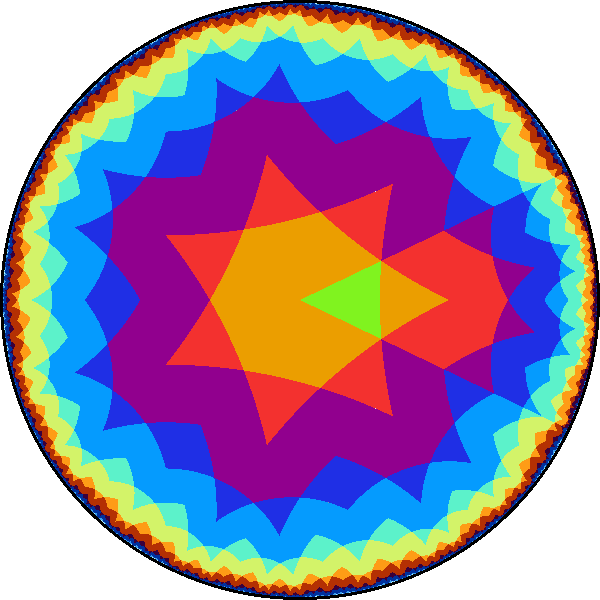
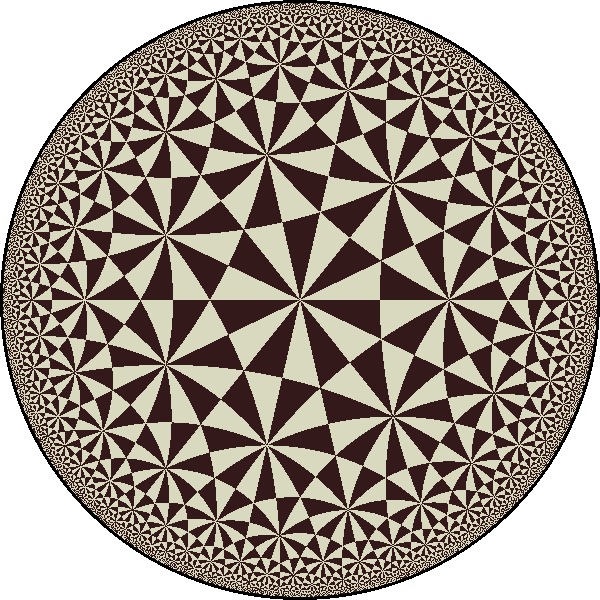
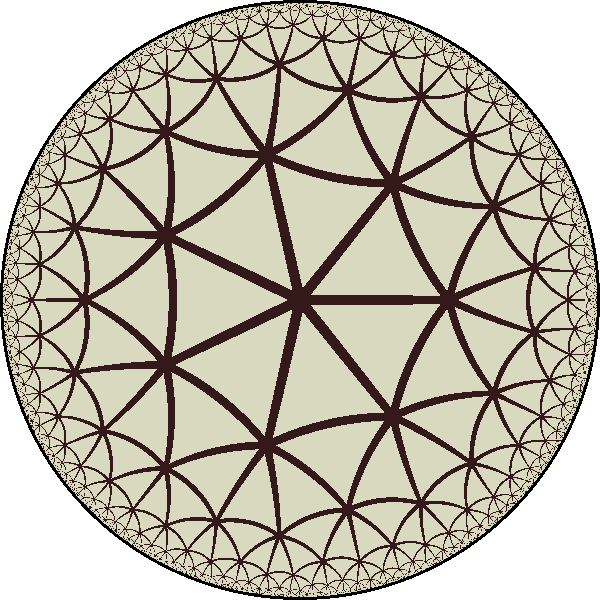
depending on re(z') and im(z').
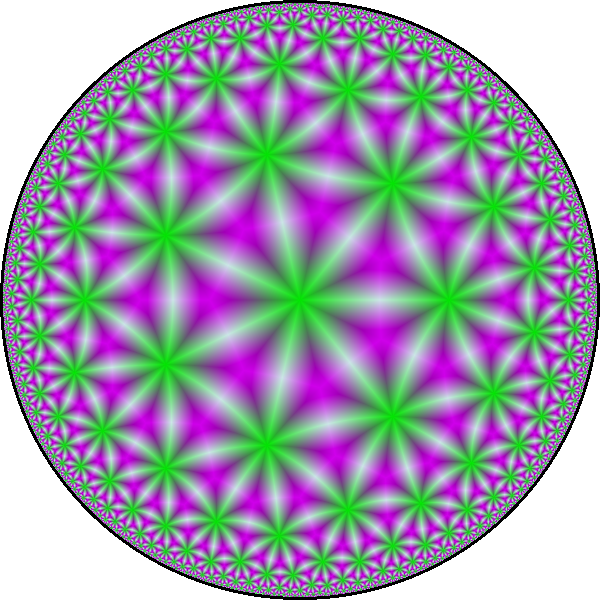
Distance estimators
Using the derivative
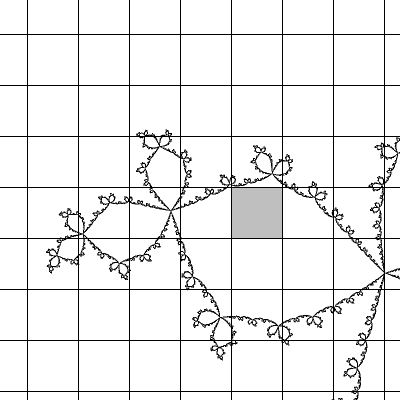 A priori to draw a bitmap image of J we would like to be able to dectect whether J goes through a given pixel.
A priori to draw a bitmap image of J we would like to be able to dectect whether J goes through a given pixel.
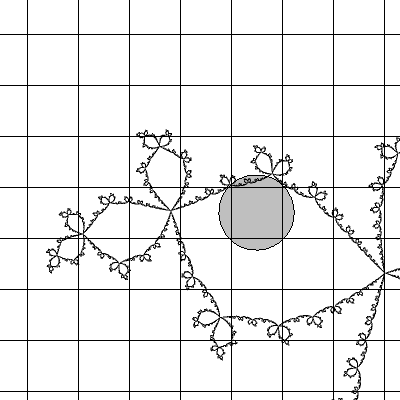 We will be a bit rough and instead try to estimate if the distance from the pixel center to J passes some threshold.
We will be a bit rough and instead try to estimate if the distance from the pixel center to J passes some threshold.
Worse: we will only estimate the distance up to some factor.
If you find any point a∈J then the set of its iterated preimages ⋃F-n{a} is dense in J.
So J intersects B(z,r) ⟺ there is some n such that a∈FnB(z,r).
FB(z, r) = B(F(z), r|F'(z)|).
This is good when r is small and z not too close to a critical point of F.
It works remarkably well for such a bold approximation.
A clear explanation of why is still missing. Related to bounded distorsion of inverse branches.
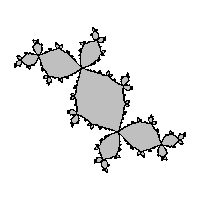
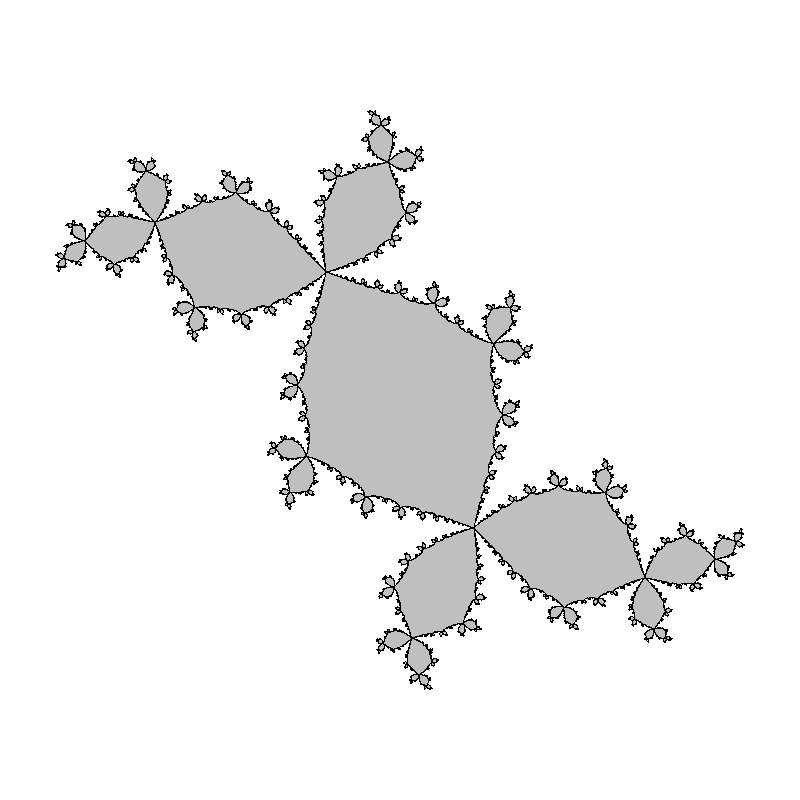
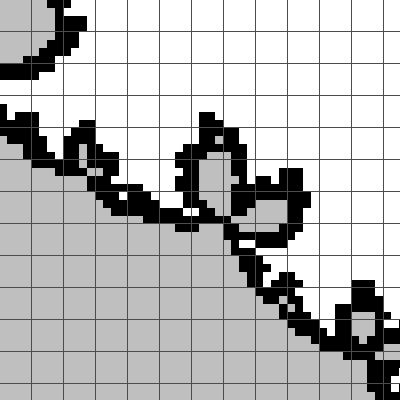
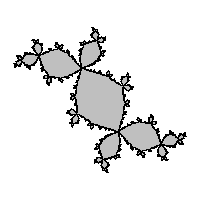
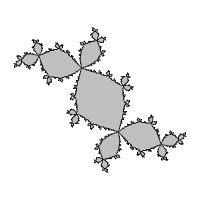
Good news: the image of a disk is a disk.
Next slide: for the {3,7} group, we start from B(z,ε), ε≈pixel-size. Iterate under a or b until z'=g.z falls in the fundamental domain, and we test whether g.B(z,ε) meets the boundary of a triangle.
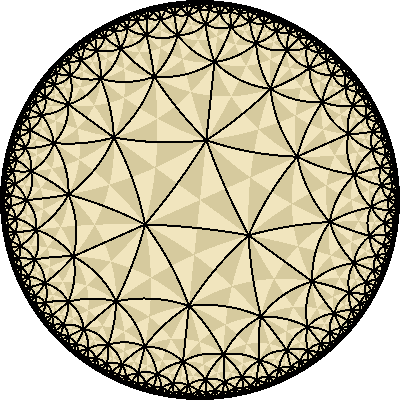
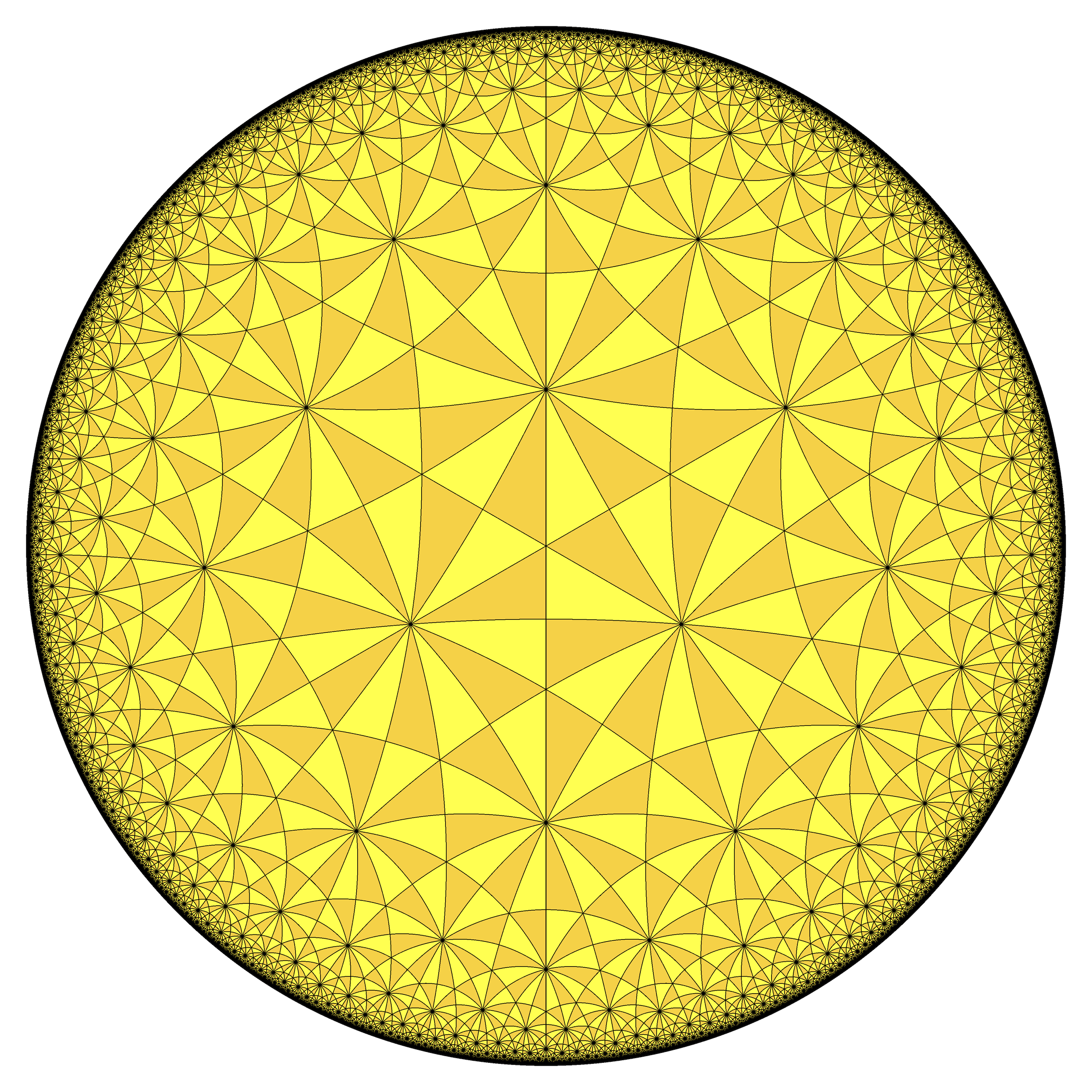
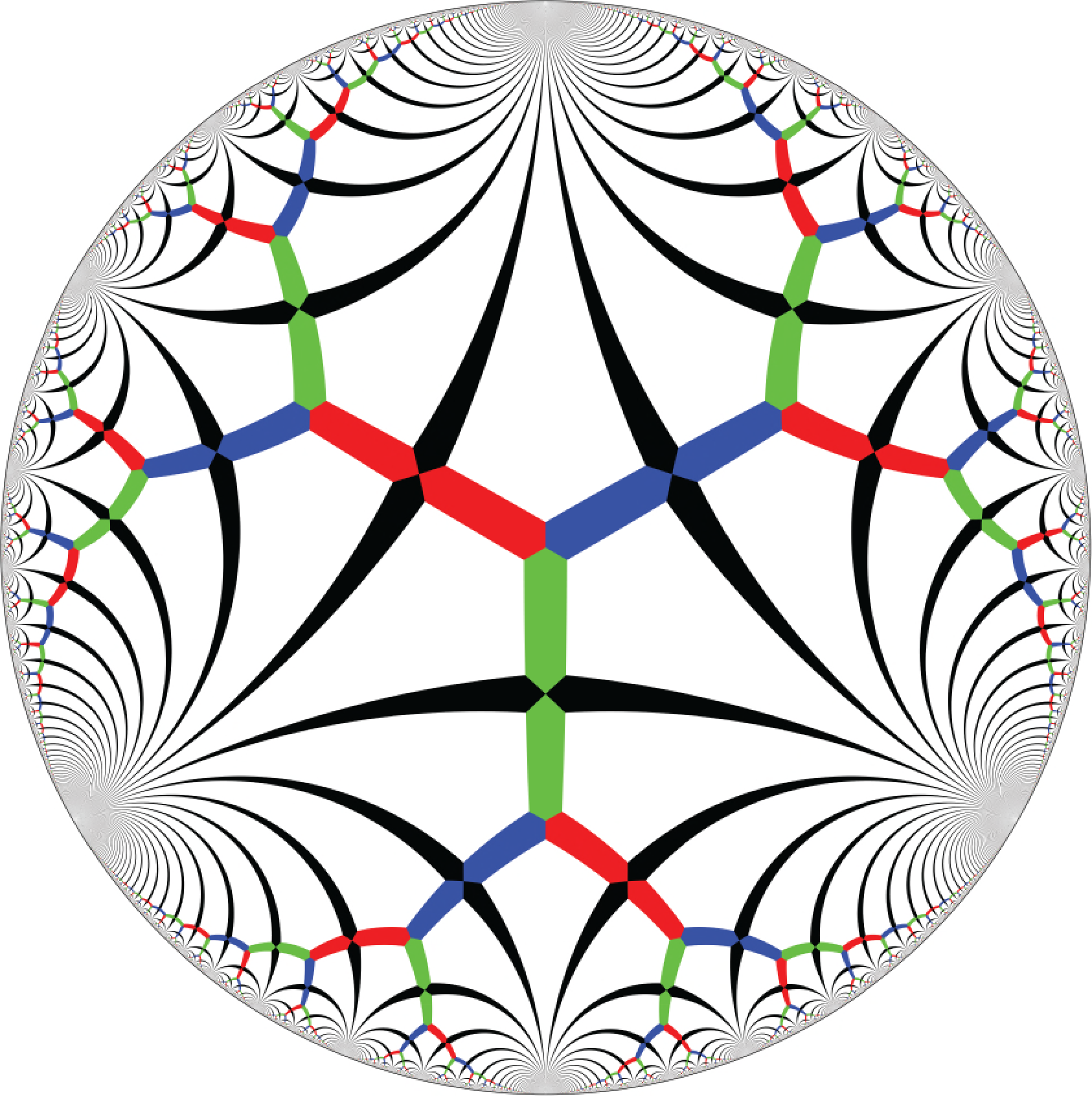
Non-Fuchsian
Kleinian
groups

 The method for quasifuchsian groups in Indra's Pearls consists in drawing segments between a clever selection of words, properly ordered.
The method for quasifuchsian groups in Indra's Pearls consists in drawing segments between a clever selection of words, properly ordered.
This yields fantastic images like the following by D. Wright:

How do you choose which element of the group to apply to a given pixel center or disk?
No advantage in exploring the whole group.
Need a guess of which group elements are more appropriate.
Not as easy as in the case of {3,7}.
Kleinian groups
The sphere S2 is the boundary at infinity the hyperbolic space H3 and direct isometries of H3 extend to homographies of S2. Kleinian groups act on the sphere S2 and correspond to discrete groups G ⊂ isom+(H3).The space G\H3 is a hyperbolic 3-manifold (or an orbifold if G has finite order elements).
Reminder
Definition: the Dirichlet domain D associated to M∈H3 is the set of points in H3 that are closer to M than to any other point in the orbit G.M. It is open and convex (Voronoï cell).
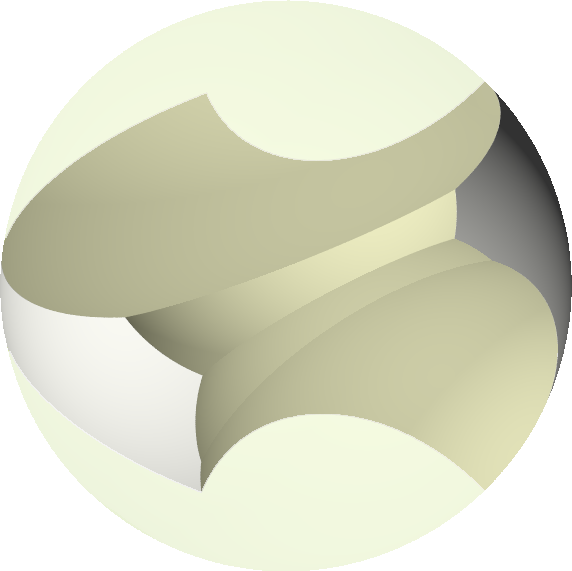 For a quasifuchsian group, D has finitely many faces and reaches the sphere at infinity along a big domain.
For a quasifuchsian group, D has finitely many faces and reaches the sphere at infinity along a big domain.
For our proposed algorithm we need to find a finite subset K of G such that every face of D is contained in the median plane med(M,g.M) for some g∈K.
In my case I found such sets K by trial and error and with no certificate that they work… other than "the pictures look legitimate".
However, I think some talented programmer mathematicians have already created algorithms that automatically find such sets K.
For every P∈H3, if P∉D then there exists g∈K such that dist(g.P,M) < dist(P,M).
We can thus find how to send P back to D with G:
loop:
if for some g∈K, dist(g.P,M)<dist(P,M) :
P = g.P
continue loop
else: exit loop
Caution: a given disk has many representatives.
- Choose a center M∈H3, find K generating the associated Dirichlet domain D.
- Identify one or a finite collection L of points on the limit set.
- For each pixel: "iterate" (P,z) towards M until either
- the associated disk contains a point in L,
- or P enters D.
- Color black or white according to (1) or (2).
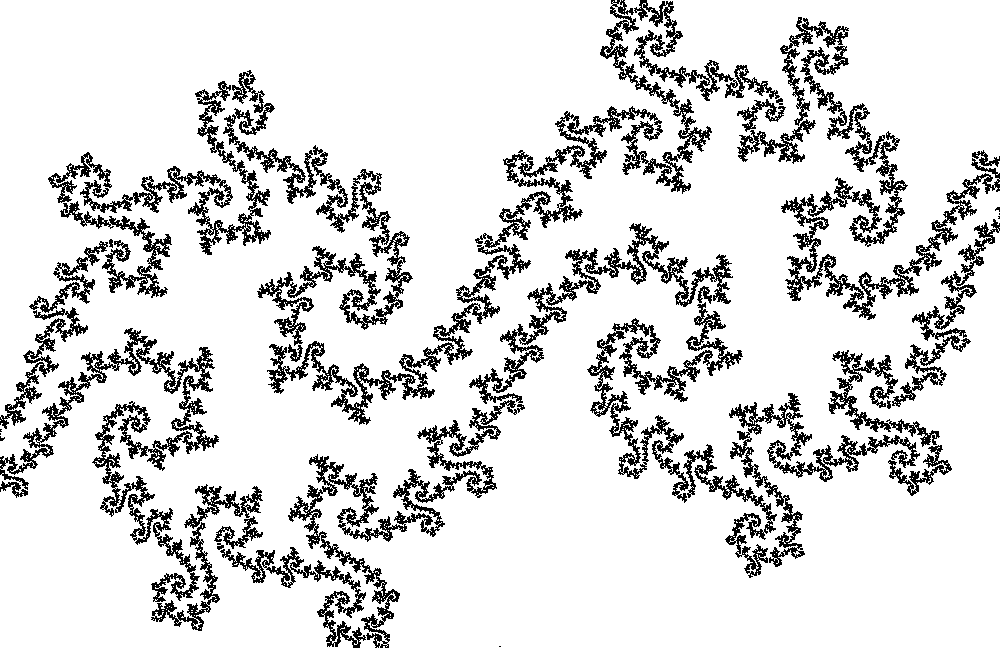
K = {a, b, A, B, ab, ba, AB, BA, a7, A7, b7, B7}.
We can test whether the final disk, associated to (Pn,zn), meets ∂U. This will detect the boundary of the tiles of the tesselation of Ω by G.U.

K = { A,B,a,b,AB,ba,BA,ab }

K = { A,B,a,b,AB,ba,BA,ab }
A few more examples.

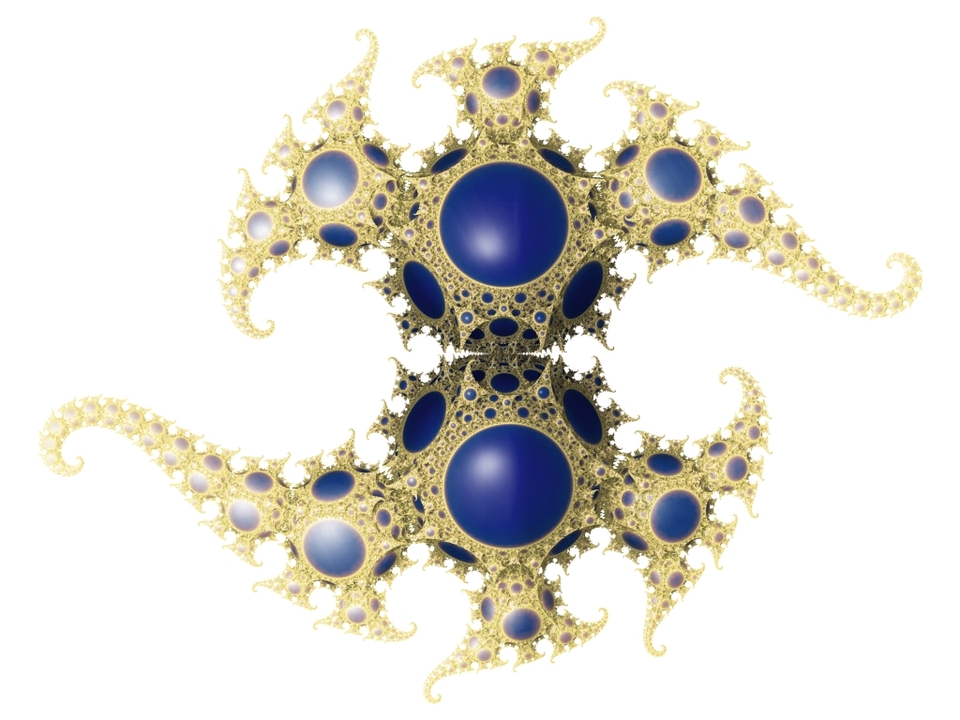
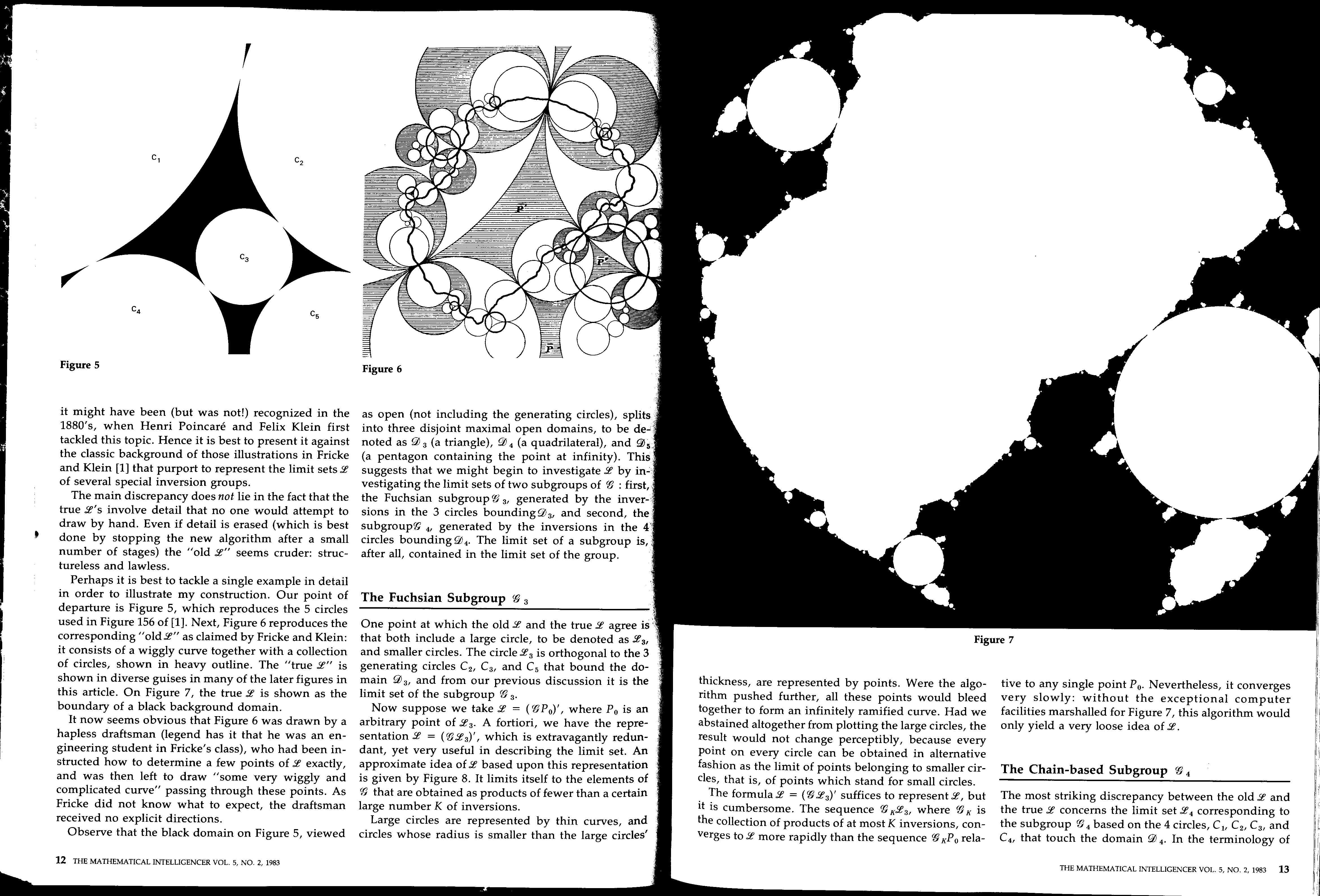
Fricke-Klein
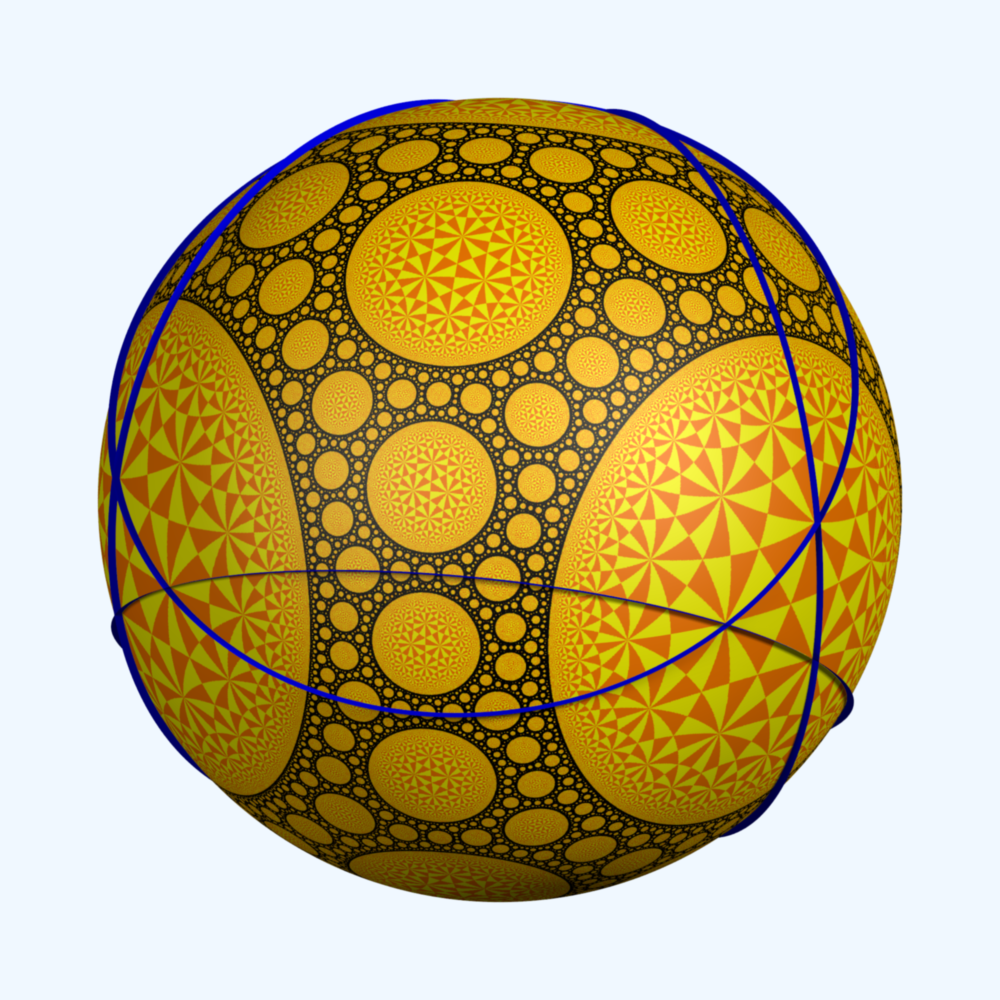 |
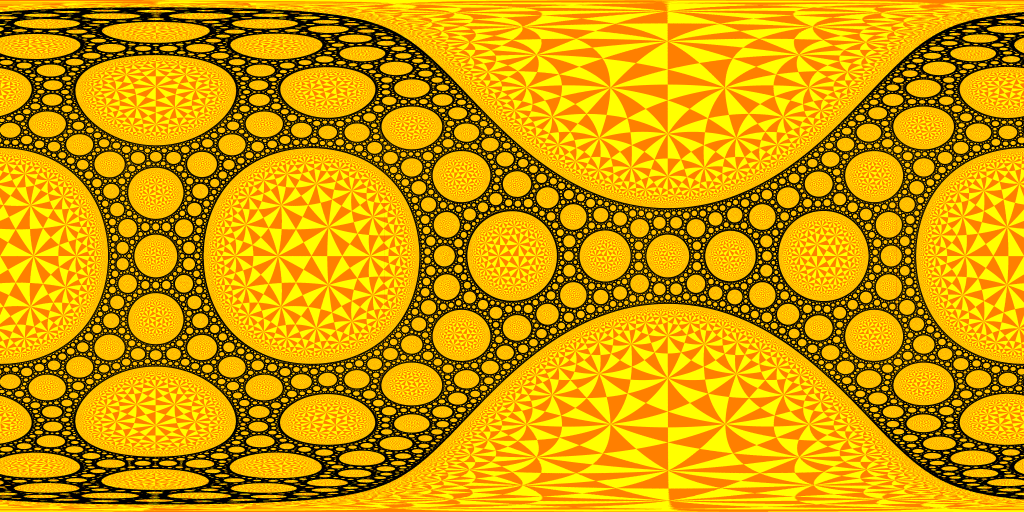

link |